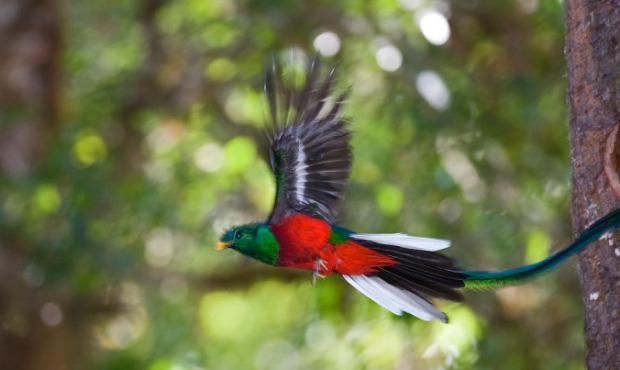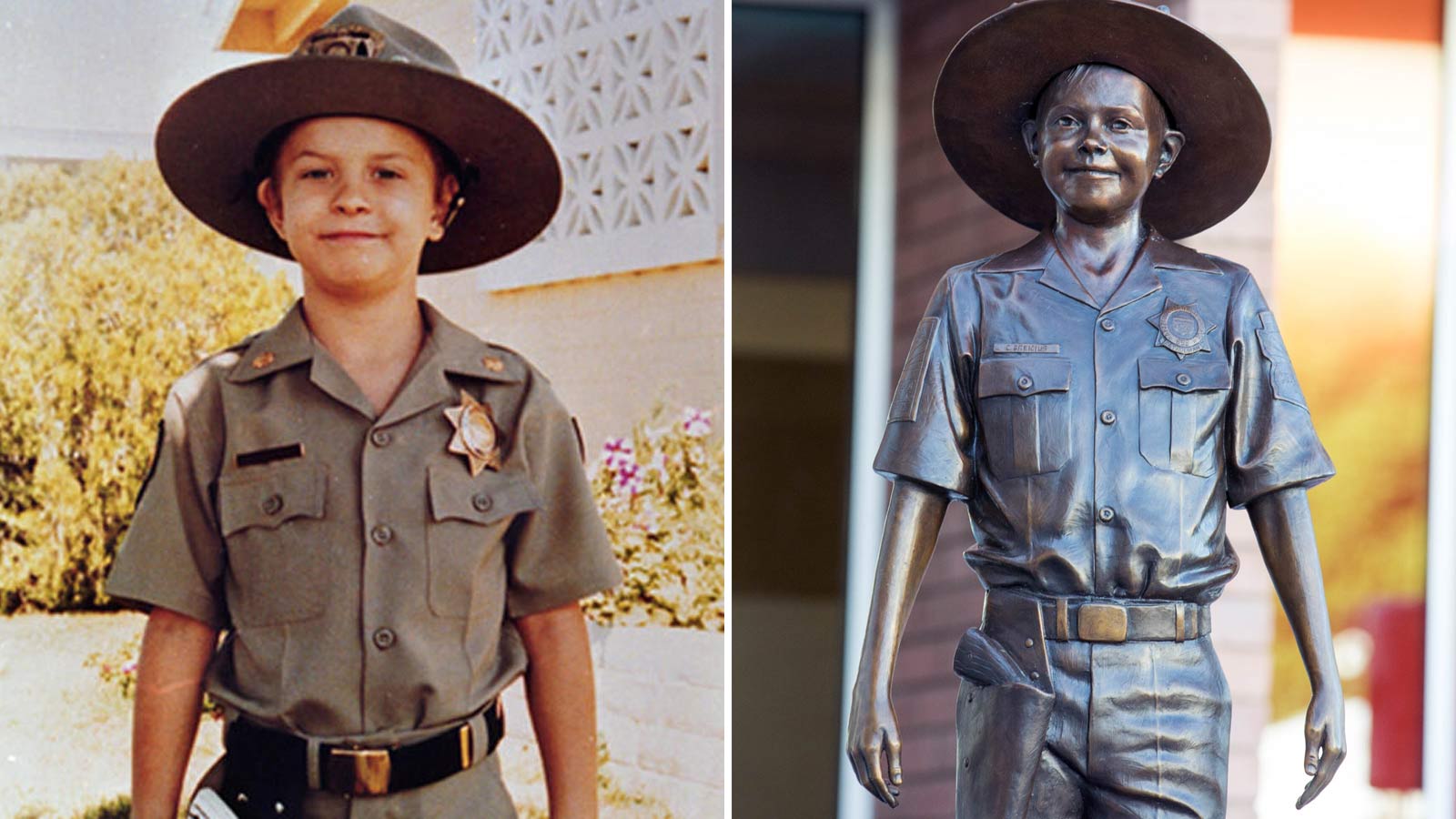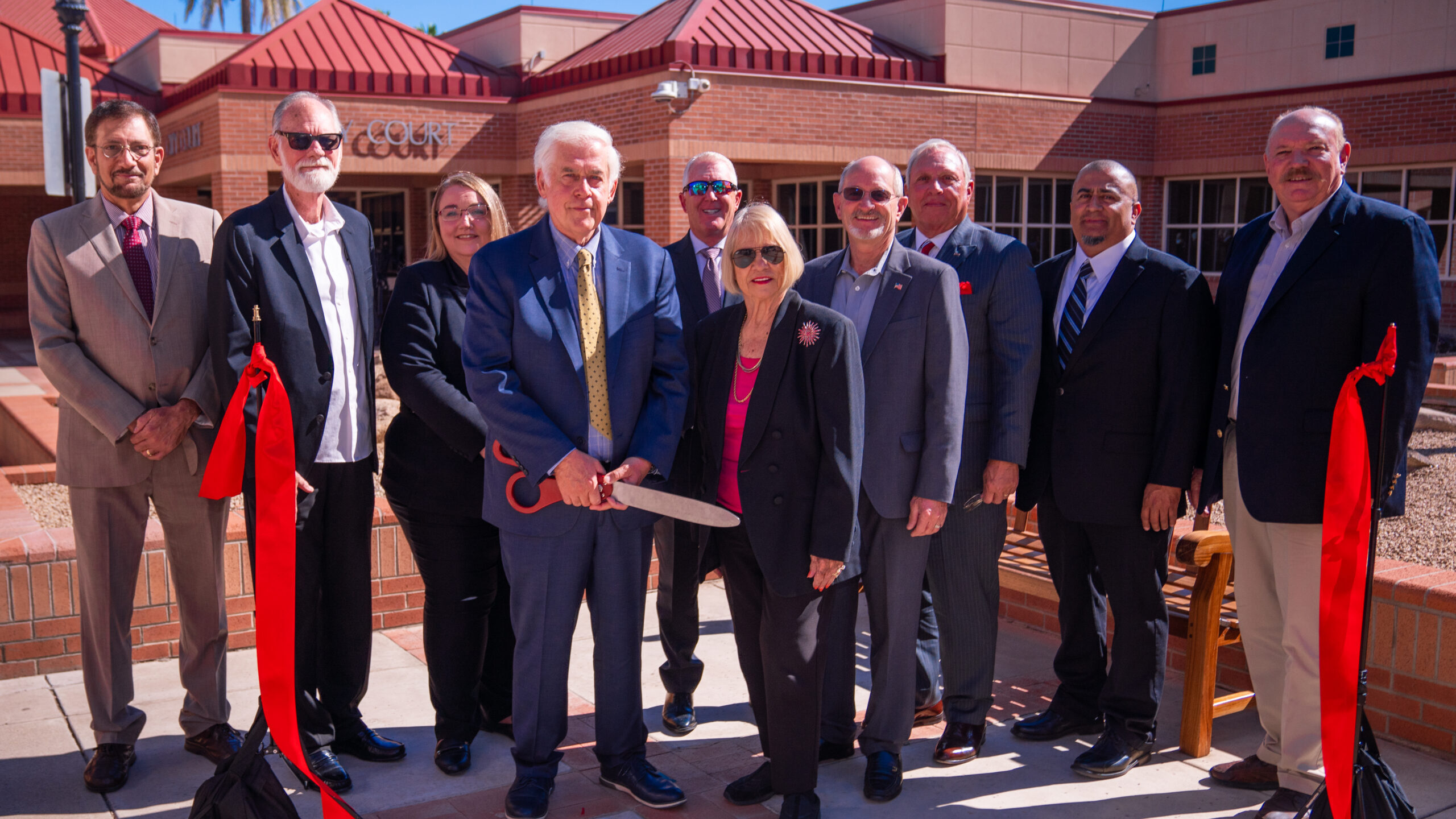Trogon count in Arizona plummets due to drought
Jul 10, 2021, 6:00 PM

(Getty Images)
(Getty Images)
TUCSON, Ariz. (AP) — Early the morning of June 30, Tucson nature photographer Ian Adrian heard the sound of what resembled a small dog barking while hiking in the Santa Rita Mountains. Looking around, he saw a male elegant trogon, Southern Arizona’s colorful signature bird, perched on a branch not far from the trail he was hiking.
“They are always really pretty, but its chest was more crimson than what I’ve seen. The wings were very, very deep green,” Adrian said of the bird, as he sat in front of a huge sycamore that morning, just off the Carrie Nation Trail near Madera Canyon. “Its iridescence was just eye-popping. It was incredible.”
Adrian’s trogon encounter was a much more uncommon experience than normal this year. The Tucson Audubon Society’s annual trogon survey — covering five mountain ranges including the Santa Ritas — found only 68 of them in May. That’s barely one third of the 201 the survey found in the same mountains in 2020.
It was also by far the smallest trogon count found in the group’s nine years of surveying. The sharp decline was almost certainly due to the extreme drought conditions that have plagued Southern Arizona recently, stripping trogons of their food supply, said Jennie MacFarland, Tucson Audubon’s bird conservation biologist who coordinates the trogon surveys.
About 90 volunteers detected trogons by sight and by voice in about 500 hours of surveys over three weekends.
Although one year’s crash is hardly enough to indicate a significant long-term decline, such a huge loss in trogon numbers is still a major concern for many bird lovers. Its flaming red belly and bright green wings make the trogon a huge attraction for bird watchers around the U.S. and beyond.
Although a smattering of trogons have been sighted along south Texas’ Rio Grande Valley, Southern Arizona is the only U.S. location where trogons are known to nest.
Just last month, the New York Times published a major Sunday travel piece on birding in Southern Arizona, featuring a striking photo of a male trogon. The writer detailed a protracted search for “the elusive elegant trogon,” through three Southern Arizona mountain ranges, a search that ended when a guide led her to a trogon in the Huachuca Mountains’ private Ramsey Canyon preserve.
At the private Santa Rita Lodge along Madera Canyon, “it’s probably our biggest attraction here,” said Lily Holt, whose father owns the lodge. Its gift shop is filled with trogon paraphernalia: postcards, paintings, mugs, baseball caps, pins and greeting cards.
“Trogons are one of the big natural history draws in Southern Arizona,” added Lorena Moore, who works in sales at the lodge’s gift shop.
But last year was Tucson’s driest year on record. Only 4.17 inches (10.6 centimeters) of rain fell all year at Tucson International Airport, more than 6 inches (15.2 centimeters) less than the city’s annual average.
This year, only 1.21 inches (3.1 centimeters) have fallen at the airport through June, less than half the 2.95-inch (7.5-centimeter) average for the period. Also, the last 18 months ending in May 2021 was the driest period of that length on record at the airport, National Weather Service records show.
“Trogons need a lot of insects to raise their young. It’s so dry out there, I don’t think it looks good for them, including to nest,” MacFarland said.
A small number of Southern Arizona trogons live here year-round, but the vast majority migrate back and forth from Sonora while breeding in this country.
“Most would have had to come up here to nest. Either they found the journey too difficult, since there’s a drought in Mexico too, so I think a lot of them just stayed,” MacFarland said.
“Some may have died, but I suspect not. Migrants sort of figure this stuff out,” MacFarland added. “When they start traveling and run into conditions that don’t seem safe, I think a lot of them just turn around and go back.”
But as he sat near a huge sycamore tree along the Madera Canyon nature trail, birder and trained ornithologist Steve Vaughan offered an alternative possibility: that the trogons were still here but simply not as visible, due to drought killing off their food supply.
“Maybe they’re not breeding, they’re not calling as much. Calls are a direct effort to attract females, or they’re territorial calls to drive off other males,” said Vaughan, who volunteers for the Audubon Society.
“I’m not saying Jennie’s wrong. I’ve been doing this for 40-something years and I’m saying there are other possibilities,” he said.
Personally, he has only even heard trogon calls along the canyon twice in 10 days of being there over the past two months, far less than normal, he said. One call on June 30 came from a hill to his east across the Madera Canyon Road. The other came a week earlier from the canyon’s amphitheater, about a half-mile from the Madera Canyon picnic area.
Bird counts can vary year to year without any actual changes in their actual populations, he told the Star later in an email.
“I feel we need to be careful talking about a population crash with just a single season of data. Population trends should be looked at over periods of years or decades. The fact that we had record high counts last year and a record low count this year makes me question one years data as a trend,” Vaughan told the Star in an email.
Vaughan may be partially correct, but “I don’t know how to test” his theory, MacFarland said. Some volunteers have told her that trogons they found were being “so quiet, so sneaky,” that she thinks detectability of the birds could have been a problem, she said.
“But I have pretty experienced volunteer crews. A small percentage of our lower number could have been birds overlooked, but I think it’s definitely due to them mostly not being here,” she said. “It’s a dramatic shift, a third of what would normally be here.
“It’s not all detectability, especially when I have people surveying all morning, and they’ve been doing this for years, and they often have done the same route for multiple years,” MacFarland said.
Just walking up and down the Madera Canyon nature trail, it’s not hard to see why trogons are likely shying away from this region now.
Trogons like to nest in and fly in and around sycamore trees, for instance. But many of Madera’s numerous sycamores were covered with brown leaves. Others were limp or withering. Many other tree varieties, particularly oaks, had many bare branches or were covered with yellow or yellow-green leaves.
At the Santa Rita Lodge, Moore said that Emory oaks in particular have been dropping leaves the last couple of months because of poor winter 2020-21 rains. Quite a few silver leaf oaks that are carrying beige or brown leaves are dead, she said.
“I kind of wonder if they just checked this area out and found no insects,” Moore said of the trogon, since they eat caterpillars and other “soft body” insects such as katydids and crickets.
Another insect-eating bird that regularly frequents Madera Canyon in the summer, the sulphur-bellied flycatcher, has not been seen in the canyon this year, she said. Painted redstarts, whose red lower breasts and bellies are huge draws for birders, also are not here as much as usual this summer, she said.
While the common acorn woodpecker is as ubiquitous as ever in Madera Canyon this summer, the black oaks that normally produce acorns they eat by now are producing “nothing” in the way of acorns this year, she said.
“Anything that eats acorns — woodpeckers, bears, turkeys, coatimundis, Mexican jays — they’re going to have a problem,” Moore said.
In addition, the lack of food in the wild has drawn several black bears into the area, and they’ve been tearing some of the lodge’s suet-seed bird feeders enough that the lodge took the feeders down two weeks ago, Moore said.
Audubon’s MacFarland said her group’s surveyors also recorded a sharp decline in numbers of chestnut-collared longpurs this past winter in the grasslands of the San Rafael Valley and the Las Cienegas National Conservation Area north of Sonoita. She blamed the decline on a lack of food availability — no monsoon rains in 2020 kept the grasses that produce seeds the longspurs eat to survive winters from from growing.
“In a normal year, we’ll get 200 to 300 to 4 or 500,” she said. “This past winter, I found fewer than 10. It was bad.”
Over in the Chiricahuas, where bird student and retired birding guide Rick Taylor has been monitoring trogons since 1976, he is seeing many of the same phenomena as are Moore and MacFarland with other species.
This past spring, for instance, observations of the usually common black bear in the Chiricahuas have been rare, he said. They are frequently encountered by trogon surveyors, but “this year, as far as I know there was not a single black bear encountered in the Chiricahuas during the survey,” said Taylor, who lives in White Tail Canyon in that range.
With birds, many other migrating species besides trogons are staying or did stay later than usual after arriving from Mexico and other southern wintering grounds, he said. That includes rufous and calliope hummingbirds, Cassin’s finch, the dark-eyed junco, Lincoln’s sparrow and the Swainson’s thrush, he said.
“Apparently, they are blocked by the drought north of us as well. They reached the Chiricahuas and said ‘the heck with it,’” said Taylor.
For him, the other species’ response to drought drives home his long-held belief that trogons are a good “indicator species,” reflecting the health of ecosystems in Southeast Arizona’s border mountain ranges.
“They are fairly conspicuous and extremely charismatic. They’ve brought in birders from throughout the U.S. You can gauge the overall biotic health of these kind of woodland mountains along the border by whether or not trogons are in the area, he said.
One thing making trogons a good ecological indicator is that they are long-lived, surviving up to 10 to sometimes even 20 years, he said. They seem to return to the same areas, year after year. With some exceptions, their populations normally do not fluctuate from one year to the next, he said..
He, MacFarland and other trogon lovers said they hope that the monsoon rains that many weather forecasters are predicting for Southern Arizona will soon materialize, nurturing trees and grasslands that trogons and other species need to survive and possibly drawing more trogons even later this summer.
“It’s too soon to say” what this immediate population crash means for the long term, Taylor said. While he’s deeply concerned about this year’s trogon collapse, we won’t know for sure about longer-term impacts until next year’s census, he said.
“Birds are smart. They are adaptable. They do the best they can.”









